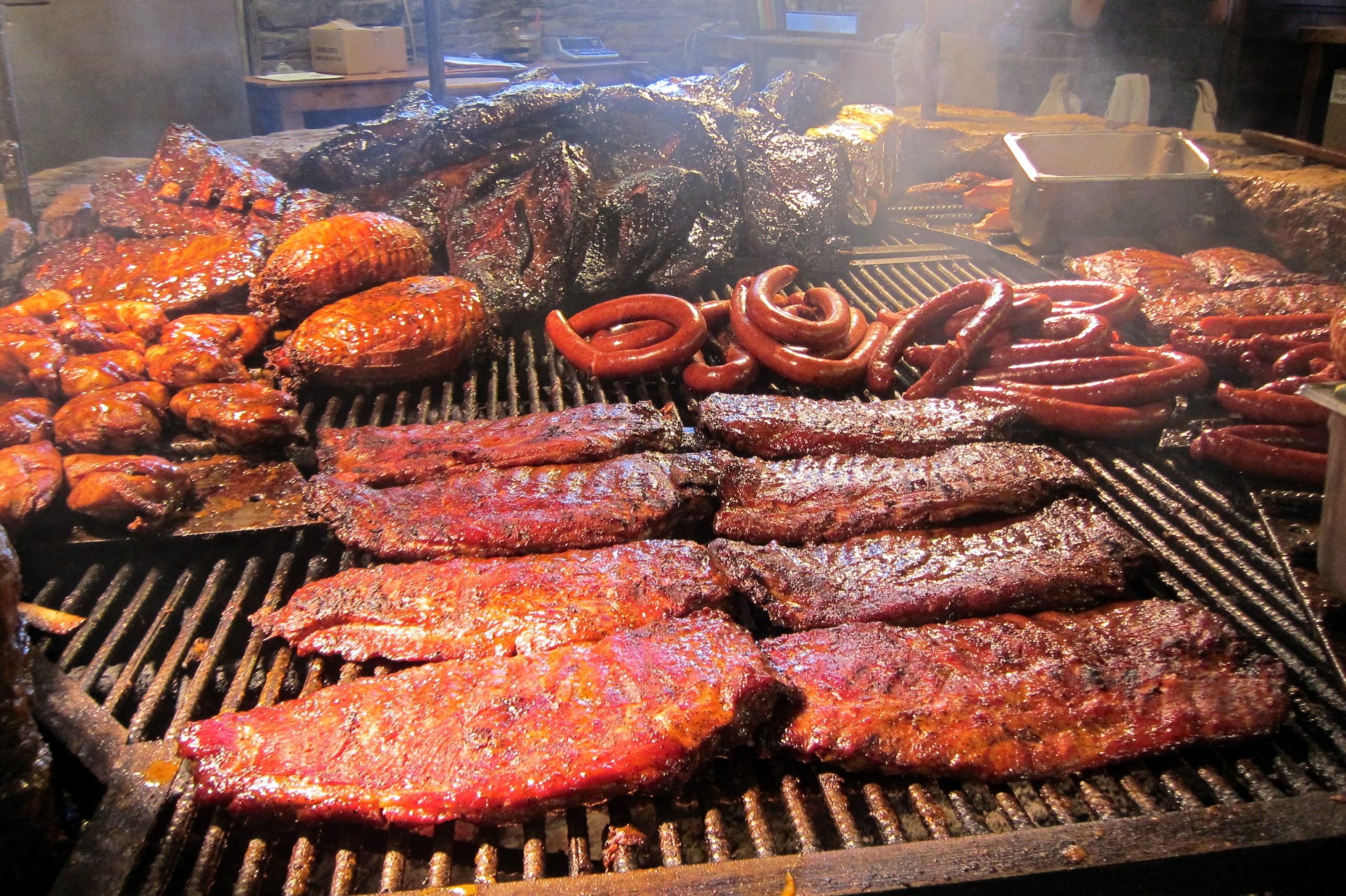Smoking quality barbecue requires the right kind of wood, and lots of it. But increasingly, good wood is hard to find for Texas pitmasters.
Daniel Vaughn, barbecue editor for Texas Monthly, spoke to the Texas Standard about why it’s harder than ever to find an affordable, reliable source of wood for barbecue. Listen to the interview above or read the transcript below.
This transcript has been edited lightly for clarity:
Texas Standard: What has created this perfect storm for pitmasters? I’m thinking supply shortages, but we’re not importing a lot of this wood, I don’t reckon.
Daniel Vaughn: The biggest issue is that there isn’t a real supply chain for wood. Barbecue joints have to go out and find individual wood suppliers. In most cases, and some of those folks, just don’t run businesses that last for long periods of time. A lot of them are sort of fly by night situations. Sometimes you’re ordering loads of wood from a pickup truck off Craigslist. And then if you go with the bigger operations that do have more stability, their prices are rising pretty considerably.
Why is that? Just general inflation? Or is there some kind of shortage or what?
Certainly, inflation has something to do with it, but not so much a shortage of wood. I think it’s really about a massive expansion of Texas barbecue. You just have so many more places now that require that load of wood coming in every week. And you only have so many trees to go around and only so many crews to go out and cut them and split them and deliver them.
If there’s no wood, there’s no barbecue. But can you keep the doors open if you can’t get the wood?
No, you can’t keep the doors open. And the thing is, when that supply dries up, oftentimes they just have to scramble to find what is usually a much more expensive option. In the case of somebody like a Hutchins Barbecue up in McKinney, Texas, north of Dallas, they went from paying $400 a cord of wood to now paying $640. They go through a massive amount of wood, too, so their monthly wood bill adds up to like $25,000. It’s just astounding.
And it’s not just any old wood that’ll work, right? I mean, if you are a serious pitmaster and the reputation of your joint matters and it does to everyone, you’ve got to find a particular kind of wood, don’t you?
Yeah. And that’s why it’s such a challenge. If you have to go out and find another wood supplier, you don’t know if they’re going to give you the properly dried out wood, or green wood that’s going to burn dirty. You also don’t know sometimes if you can’t identify the species of wood from sight, you have to take their word for it. And sometimes they’re going to pass off red oak and live oak instead of the post oak that everybody seems to be looking for these days.
I guess this will vary from restaurant to restaurant, but for your average barbecue joint, how much would do you need to smoke, say a day’s worth of meat?
Well, most of them measure it by a week’s worth. And if you take Goldie’s Barbecue, for example, a place here in Fort Worth that was recently number one on our Top 50 Barbecue List, they went from using a cord of wood a week to now using three cords of wood a week. It was a massive jump after that list came out. And so it really does vary pretty much on how many pits are you running and how much brisket are you cooking?
I’m thinking some enterprising listeners might sense an opportunity here. Maybe get into the wood business themselves if there’s such a need. But that’s probably easier said than done.
Well, yes, I talked to Michael Wheeler. He runs Sierra Wood out of the Austin area, and the way he put it is, everybody wants to be the wood guy until they are the wood guy. It’s hard work. it’s a lot of physical labor. It also requires access to wood. So either you have to have your own property where you’re growing the trees or you have to have agreements with farmers and ranchers. So that’s not always the easiest business to run.













